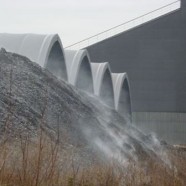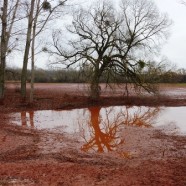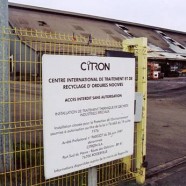Probo Koala : The Death Boat heading to the Cemetery
The Probo Koala vessel which spread death and panic in Abidjan during the summer of 2006 has just been sold by her last owner to a demolisher in Bangladesh for $ 7.7 million. Currently off the coast of China, she should be beached in Chittagong under the name of Gulf Jash within the next few days. The Greek owner had in fact sold the Probo Koala to Gulf Navigation based in Dubai.
Built in 1989, at Korean Shipbuilding & Engineering shipyards, the Probo Koala was used by the multinational company Trafigura to produce low-grade gasoline from highly sulphurised oil off the coast of Gibraltar and Malta. The toxic residue produced by these onboard refinery operations was unloaded in August 2006 at the Abidjan port. Scattered around the Ivory Coast economic capital, the residue containing hydrogen sulphide and mercaptans caused the death of 17 people and intoxicated over one hundred thousand others, according to the official figures.
The After Shock
Climatic, geological, or anthropogenic natural disasters produce in a couple of seconds, hours or days, enormous amounts of waste, so much so that authorities are unable to handle the quantity with ordinary means. The rupture of “lifelines”, namely water, electricity, transportation routes and communication lines, send survivors into a deep confusion. The accumulation of rubble and waste increases the shock of the populations and postpones the first steps towards the return to normalcy.
The 3 million tonnes of rubble generated by the earthquake in Los Angeles in January 1994 led the city to reinforce and multiply its recycling capacities. Provisional transit and elimination sites for future earthquakes were pre-selected.
The Disaster Domain Expands
The extravagant iodine-131 content around the area of the Fukushima Daiichi Nuclear Power Plant is a result of leaching of emergency cooling waters used by firefighters and emergency workers. At Fukushima and at French nuclear facilities, there is no collection device for these cooling waters whereas all warehouses storing chemical products are legally bound to be equipped with a collection basin of polluted water used to extinguish fires. The iodine-131 content is also a result of the consequent radioactive dust deposits of the explosions in the heights of the nuclear islets, namely the buildings, the reactors, and the pools. The iodine-131 is one of the indicators of pollution. Other measures will later show similar deviations from standards for cesium-137 and plutonium.
Red Mud
An ecological meddling is necessary in Hungary. The red mud from Ajka contains notably significant levels of sulphur (around 3,000 mg / kg), chromium (600 mg / kg), nickel (200 mg / kg), arsenic (100 mg / kg) and mercury (1 mg / kg). The spreading of red mud presents health risks for the population that cannot be considered as minor. To give an order of magnitude, if one considers that half of the substance was spilt on farmlands covering an area of 5,000 hectares, then each hectare would be covered by approximately 500 tons of waste.











